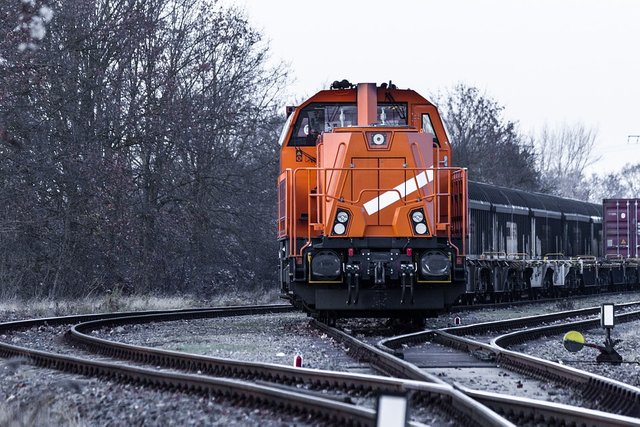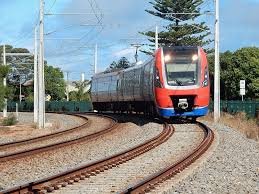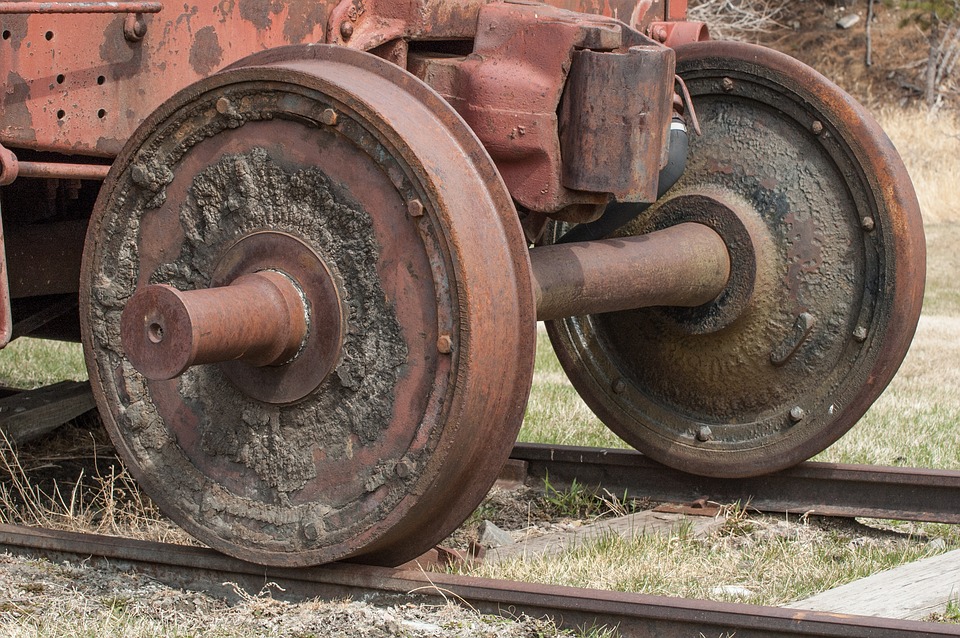Turning without a differential (how does the train do it?)

The train image from pixabay under CCO license
If you live in Europe you, you should have used the public transport at one time in your life even though you own a car. The train is like one of the best forms of public transportation which moves quite a large number of people daily. In fact, I would say they are one hell of an engine from the steam engine or electric train engines and how strong and rugged these vehicles are.

The train story
Trains have been long available even before cars came to be but have you ever wondered how these trains came to be?
Recently the invention of the magnetic levitation trains has kind of smoothen things up with the train movements. The first trains were actually made of wood in Greece and were pushed along tracks and were made of wood but they soon moved to develop better tracks and trains in the eighteenth century in the United Kingdom, this was where the first locomotive train was built
But here I am not here to talk about the history of trains but rather solve a question which bothers my mind and everyone’s mind.

The begging question
I watched a movie a few weeks ago “the commuter” where the main actor of the movie was given a task to choose between saving a particular girl on the train or kill her. Although, He managed to reduce the number of people on the train. Then something happened which caught my attention he stated that the train brakes were gone and at the speed which the train was moving, the train was going to derail because they were about to take a turn.
This struck me dearly, how would trains just derail due to speed?
I had always thought the trains are well balanced in the train tracks and would take a lot before they could derail as I picked up my gadgets to make a research what I found out was shocking but I would try to explain in layman terms.
The mechanical or locomotive train has no differential which means it does not operate like your automobile which has one. And In case you are wondering what a differential is, a differential is that in an automobile which is used to control or regulate the wheels of your car this is why the wheels of your car can move at different speed.
But the locomotive trains has nothing like that, which means all the wheels in your train moves at the same speed which could be very dangerous considering a bend even when you do such with your car the way the centrifugal force tries to pull the members out of the car is not really good. This is why one is advised against driving at high speed towards a sharp bend.
How then does the train does it and stay on track?
All wheels on the locomotive train are the same size and in a bend, they must both cover a different distance which is a very big problem but it is solved easily in trains by reducing the speed at which they take a bend. But this is not all.
If one takes note of the shape at which the wheels of a train are shaped, you would see that they are conical with the greater diameter on the inside while the smaller diameter falls outside. With this shape of the wheels, it is easy for the train to manipulate and move in the direction of the track without derail but it has to be done at a slow speed especially if the bend is a very sharp one.
When one studies the reason behind this, with an assumption that a train is making a turn in the right direction the centrifugal force that applies to a bend would act on the train in the left direction. (i.e it is likely to sway left. This centrifugal force would lead to an increase in distance of the left wheel and a decrease in distance travelled by the right wheel. This simple design I the trains allows them to move in a direction without derail and one cool thing about this is that they do not require any special part to do this but simply their design in the wheels.

train on a bend image from Wikimedia commons under CCO license

Conclusion
The trains are very special transportation used for massive movements of people and goods from one position to another, the earliest forms were made of wood and were pushed or moved manually but with the invention of the train tracks, there needed to be improvement giving rise to wondering how trains managed to turn without derail.
It was noticed and studied that train wheels have to cover the same distance but the shape at which their wheels are made makes them easy to make this turn without derail.
Thanks for reading!
References
For further reading visit these links

Interesting facts about train, great post @yandot!
Your post has been upvoted by SteemApp team, thank you for being active in our Discord channel! We really appreciate it!
Never even thought about that. Now I hope the train I am sitting in has good cones and takes the curves slowly 😁🚂
I hope you will be safe man
This post has been rewarded with 30% upvote from @indiaunited-bot account. We are happy to have you as one of the valuable member of the community.
If you would like to delegate to @IndiaUnited you can do so by clicking on the following links: 5SP, 10SP, 15SP, 20SP 25SP, 50SP, 100SP, 250SP. Be sure to leave at least 50SP undelegated on your account.
to get community support and guidance
. Please contribute to the community by upvoting this comment and posts made by @indiaunited.
Good topic
Well done ❤
Thank you :D
Good post..
Good luck
Thanks :))
Interesting piece. I enjoyed the simple explanations. Even though I have never been on a train
Cool! Good stuff here..the conical wheel is just genius. . I love riding trains.
I like how short and very well constructed this article is . Thanks for this. Nice afternoon read ,
How more could you have explained that. I see train at least 3 times a day. But i never knew some of these points you explained about them.. Especially the one of The shape of the wheels.. The inner one and the outer one. The way they are fitted on the track. I will try and notice one tomorrow.
I am glad i learnt something new.